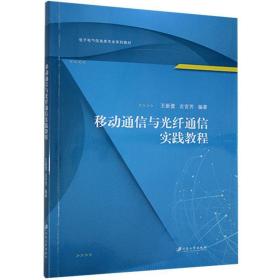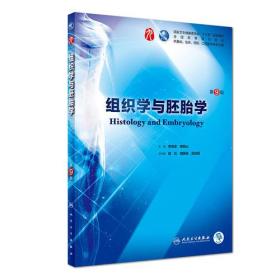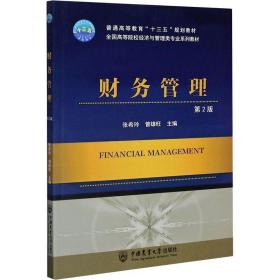
学会提问(第11版)·英文版
正版全新,绝无盗版,可开具图书发票
¥ 37.3 全新
库存9件
四川成都
认证卖家担保交易快速发货售后保障
作者[美]M.尼尔·布朗(M. Neil Browne);[美]斯图尔特·M.基利(Stuart M. Keeley)
出版社清华大学出版社
出版时间2020-08
版次1
装帧其他
上书时间2024-05-27
- 在售商品 暂无
- 平均发货时间 16小时
- 好评率 暂无
- 最新上架
商品详情
- 品相描述:全新
图书标准信息
- 作者 [美]M.尼尔·布朗(M. Neil Browne);[美]斯图尔特·M.基利(Stuart M. Keeley)
- 出版社 清华大学出版社
- 出版时间 2020-08
- 版次 1
- ISBN 9787302533030
- 装帧 其他
- 开本 32开
- 纸张 胶版纸
- 【内容简介】
- 本书具有简明扼要、清楚易懂以及篇幅短小的特色。这本小书出色地完成了它的既定目标——传授批判性思考和提问的技能。40多年向学生传授批判性思维技能的经验也让我们确信,尽管学生们能力有差异、术业有专攻,只要我们用简单易懂的方法向他们传授批判性思维的技能,他们很快就能成功地将其应用于各种实践。在学以致用的过程中,他们的信心逐步增强,在重大社会问题和个人问题方面,他们做出理性抉择的能力也与日俱增,哪怕面对从前极少经历过的重大问题,他们也一样可以应对自如。 虽然本书主要是从我们的课堂教学经验中总结出来的,但它的目标在于指导绝大多数人培养更佳的阅读和倾听习惯。对于它旨在培养的种种技能,任何一个不盲从、盲信的读者都需要将之拿来用作理性判断的基础。本书所反复强调的批判性问题可以提高我们的论证能力,不管我们受过的正规教育有多少。你在书里的收获,相信会大大出乎你的意料。
- 【作者简介】
-
M.尼尔•布朗
博林格林州立大学(Bowling Green State University)的杰出经济学教授。获有托雷多大学法学博士学位和得克萨斯大学的博士学位。曾经合著7本书,并在专业期刊发表100余篇研究论文。曾被威斯康星大学、印第安纳大学、科罗拉多大学等几十所大学聘请,协助其培养教职员工的批判性思维技巧。他是《韩国批判性思维》期刊的编委会成员,还是“国际批判性思维大会”的主要发言人。2001年获博林格林州立大学“终生成就奖”,2002年获博林格林州立大学“杰出教学能力奖”,以及美国教育促进与支持委员会的“全国年度杰出教授”银牌奖章、“俄亥俄州年度杰出教授”等许多全国性和地方性的荣誉称号。近期为美国国家安全部、IBM公司、乐高公司、新加坡K2B国际公司、美国商学院联盟、美国空军研究院等众多机构及公司提供批判性思维的训练及咨询服务。
斯图尔特•M.基利
美国伊利诺伊大学心理学博士。现为美国博林格林州立大学心理学教授。
- 【目录】
-
CHAPTER
1
The Benefit and Manner of Asking the
Right Questions 1
The Noisy, Confused World We Live in 1
Experts Cannot Rescue Us, Despite What They
Say 4
The Necessity of Relying on Our Mind 5
Critical Thinking to the Rescue 6
The Sponge and Panning for Gold: Alternative
Thinking Styles 8
Weak-Sense and Strong-Sense Critical Thinking 10
The Importance of Practice 12
Critical Thinking and Other People 12
Values and Other People 12
Primary Values of a Critical Thinker 14
Keeping the Conversation Going 16
Creating a Friendly Environment for
Communication 19
CHAPTER
2
Speed Bumps Interfering with Your Critical
Thinking 20
The Discomfort of Asking the Right Questions 21
Thinking Too Quickly 21
Stereotypes 22
Mental Habits That Betray Us 23
Halo Effect 24
Belief Perseverance 24
Availability Heuristic 26
Answering the Wrong Question 27
Egocentrism 28
Wishful Thinking: Perhaps the Biggest Single Speed
Bump on the Road to Critical Thinking 29
CHAPTER 3 What Are the Issue and the Conclusion? 33
Kinds of Issues 34
Searching for the Issue 36
Searching for the Author’s or Speaker’s
Conclusion 37
Using This Critical Question 39
Clues to Discovery: How to Find the Conclusion 39
Critical Thinking and Your Own Writing and
Speaking 40
Narrowing Your Issue Prior to Writing 41
Cluing Your Reader into Your Conclusion 42
Practice Exercises 42
Sample Responses 44
CHAPTER 4 What Are the Reasons? 47
Initiating the Questioning Process 50
Words That Identify Reasons 52
Kinds of Reasons 52
Keeping the Reasons and Conclusions Straight 53
Using This Critical Question 54
Reasons First, Then Conclusions 54
Critical Thinking and Your Own Writing and
Speaking 55
Exploring Possible Reasons before Reaching
a
Conclusion 55
Identify Major Publications That Cover Your
Issue 56
Helping Your Readers Identify Your Reasons 57
Practice Exercises 57
Sample Responses 59
What Words or Phrases Are
Ambiguous? 62
The Confusing Flexibility of Words 63
Locating Key Terms and Phrases 64
Checking for Ambiguity 67
Using This Critical Question 67
Determining Ambiguity 68
Context and Ambiguity 70
Using This Critical Question 72
Ambiguity, Definitions, and the Dictionary 72
Ambiguity and Loaded Language 75
Limits of Your Responsibility to Clarify Ambiguity 76
Ambiguity and Your Own Writing and Speaking 77
CHAPTER
5
Keeping Your Eye Out for Ambiguity 77
Practice Exercises 79
Sample Responses 80
CHAPTER
6
What Are the Value and Descriptive
Assumptions? 84
General Guide for Identifying Assumptions 87
Value Conflicts and Assumptions 88
From Values to Value Assumptions 89
Typical Value Conflicts 91
The Communicator’s Background as a Clue to Value
Assumptions 92
Consequences as Clues to Value Assumptions 92
More Hints for Finding Value Assumptions 94
The Value of Knowing the Value Priorities of
Others 95
Using This Critical Question 96
Values and Relativism 96
Identifying and Evaluating Descriptive
Assumptions 97
Illustrating Descriptive Assumptions 97
Common Descriptive Assumptions 100
Clues for Locating Assumptions 101
Avoiding Analysis of Trivial Assumptions 103
Assumptions and Your Own Writing and
Speaking 104
Practice Exercises 106
Sample Responses 108
CHAPTER
7
CHAPTER
8
Are There Any Fallacies in the
Reasoning? 110
A Questioning Approach to Finding Reasoning
Fallacies 112
Evaluating Assumptions as a Starting Point 114
Discovering Other Common Reasoning
Fallacies 116
Looking for Diversions 123
Sleight of Hand: Begging the Question 126
Using This Critical Question 127
Summary of Reasoning Errors 127
Expanding Your Knowledge of Fallacies 128
Practice Exercises 128
Sample Responses 130
How Good Is the Evidence: Intuition, Personal
Experience, Case Examples, Testimonials,
and Appeals to Authority? 133
The Need for Evidence 134
Locating Factual Claims 136
Sources of Evidence 137
Intuition as Evidence 139
Personal Experience as Evidence 140
Case Examples as Evidence 141
Testimonials as Evidence 143
Appeals to Authority as Evidence 145
Using This Critical Question 149
Your Academic Writing and Evidence 149
Practice Exercises 150
Sample Responses 152
CHAPTER
9
How Good Is the Evidence: Personal
Observation, Research Studies, and
Analogies? 153
Personal Observation as Evidence 153
Research Studies as Evidence 154
General Problems with Research Findings 156
Generalizing from the Research Sample 162
Generalizing from the Research Measures 164
Biased Surveys and Questionnaires 166
Analogies as Evidence 169
Identifying and Comprehending Analogies 170
Evaluating Analogies 171
When You Can Most Trust Expert Opinion 174
Research and the Internet 176
Practice Exercises 178
Sample Responses 179
CHAPTER 10
Are There Rival Causes? 181
When to Look for Rival Causes 182
The Pervasiveness of Rival Causes 183
Detecting Rival Causes 185
The Cause or a Cause 185
Multiple Perspectives as a Guide to Rival
Causes 187
Rival Causes for Differences Between Groups 188
Confusing Causation with Association 190
Confusing “After This” with “Because of This” 192
Explaining Individual Events or Acts 193
Evaluating Rival Causes 194
Rival Causes and Your Own Communication 195
Exploring Potential Causes 196
Practice Exercises 197
Sample Responses 199
CHAPTER 11 Are the Statistics Deceptive? 201
Unknowable and Biased Statistics 203
Confusing Averages 204
Concluding One Thing, Proving Another 207
Deceiving by Omitting Information 208
Using Statistics in Your Writing 210
Practice Exercises 211
Sample Responses 212
CHAPTER 12
What Significant Information Is Omitted?
215
The Benefits of Detecting Omitted Information 216
The Certainty of Incomplete Reasoning 217
Questions That Identify Omitted Information 219
But We Need to Know the Numbers 220
The Importance of the Negative View 223
Omitted Information That Remains Missing 225
Using This Critical Question 225
Practice Exercises 225
Sample Responses 227
CHAPTER 13
What Reasonable Conclusions Are
Possible? 229
Dichotomous Thinking: Impediment to Considering
Multiple Conclusions 230
Two Sides or Many? 232
Productivity of If-Clauses 233
The Liberating Effect of Recognizing Alternative
Conclusions 234
Summary 235
Practice Exercises 236
Sample Responses 237
Final Word 238
Index 240
点击展开
点击收起
— 没有更多了 —












以下为对购买帮助不大的评价